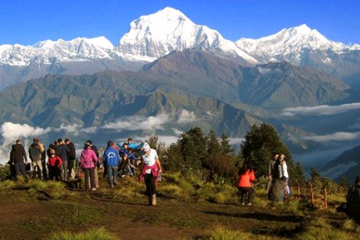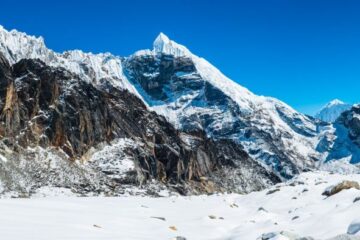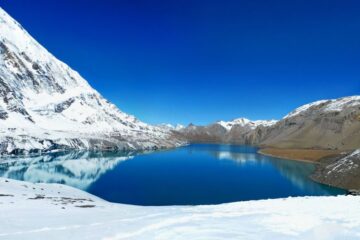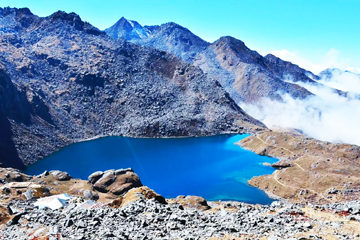Poon Hill Trekking, often known as Ghorepani Poon Hill Trek, is one of Nepal’s best short and easy hikes. It is a perfect short trekking option in Annapurna. This trek allows you to explore the north-western acreages of Pokhara.
Ghorepani Poon Hill is an amazing viewpoint in the Annapurna Sanctuary, Nepal. This hilltop provides dreamlike, picturesque views of the magnificent mountain ranges that stretch on the horizon throughout the north side of the country.
Nature View Treks will arrange your trip that includes a trail to Ghorepani village at 2875m and short hiking towards the Poon hill at 3210m for the observation of sunrise and vistas mountain ranges. In short, Ghorepani Poon hill trekking is the shortest and the most beloved destination in the Annapurna region.
Ghorepani Trek Highlights
- Experience the best of short treks around Nepal’s Himalayas
- Walkthrough quaint nature, Rhododendron forests, and rural villages of Annapurna region
- Savor the picture-perfect outlook of magnificent Annapurna South and Fishtail
- Spend the night in comfortable teahouses along the trekking route
- Relish a moment at Phewa Lake of beautiful Pokhara city
- Adore superb sunrise and sunset over Annapurna and Dhaulagiri ranges from Poonhill
Day 1: Arrival in Kathmandu
- Arrive in Kathmandu, the capital city of Nepal.
- Transfer to your hotel and rest.
- Explore the vibrant streets of Thamel and make final preparations for the trek.
- Overnight stay in Kathmandu.
Day 2: Kathmandu to Pokhara
- Take a scenic flight or drive from Kathmandu to Pokhara (approximately 6-7 Hours By bus/30 Min By Flight).
- Enjoy the beautiful views of rivers, terraced fields, and traditional Nepali villages along the way.
- Explore Pokhara, a charming lakeside city, and prepare for the trek.
- Overnight stay in Pokhara.
Day 3: Pokhara to Tikhedhunga
- Take a short drive to Nayapul (approximately 1.5 hours) and begin the trek.
- Trek through picturesque villages, terraced fields, and lush forests.
- Pass through Birethanti and reach Tikhedhunga.
- Overnight stay in Tikhedhunga.
Day 4: Tikhedhunga to Ghorepani
- Start the day with a steep ascent of around 3,000 stone steps known as Ulleri.
- Continue trekking through rhododendron and oak forests.
- Reach the village of Ghorepani, which offers stunning views of the Himalayas.
- Overnight stay in Ghorepani.
Day 5: Ghorepani to Poon Hill to Tadapani
- Early morning hike to Poon Hill (3,210m) to witness a breathtaking sunrise over the Himalayas, including views of Dhaulagiri, Annapurna, and Machhapuchhre (Fishtail).
- Descend back to Ghorepani and have breakfast.
- Continue trekking through beautiful forests and reach Tadapani.
- Overnight stay in Tadapani.
Day 6: Tadapani to Ghandruk
- Trek through a dense rhododendron forest.
- Enjoy panoramic views of the Annapurna and Machhapuchhre mountain ranges.
- Descend to the Gurung village of Ghandruk, known for its rich culture and traditional lifestyle.
- Explore the village and interact with the locals.
- Overnight stay in Ghandruk.
Day 7: Ghandruk to Nayapul and Pokhara
- Descend further to Nayapul, passing through terraced fields and small settlements.
- Reach Nayapul and drive back to Pokhara.
- Enjoy a relaxing evening by Phewa Lake.
- Overnight stay in Pokhara.
Day 8: Pokhara to Kathmandu
- Drive or fly back to Kathmandu.
- Rest and explore the city.
- Visit famous cultural and historical sites like Durbar Square, Pashupatinath Temple, and Boudhanath Stupa.
- Overnight stay in Kathmandu.
Day 9: Departure
- Transfer to the airport for your departure.
Airport pick-up and drop-off by private vehicle
Two-night accommodation with breakfast at hotel in Kathmandu
Two nights’ accommodation with breakfast hotel in Pokhara
Surface transfer to and from Pokhara on a tourist bus
Surface transfer to and from Nayapul on private vehicle
Full board meals with tea/coffee (breakfast, lunch, and dinner) during the trek
Best available twin sharing lodge to lodge accommodation during the trek
An experienced English-speaking (trekking guide), porter to carry luggage (2 trekkers: 1 porter) including their salary, insurance, equipment, meals, and accommodation
A comprehensive medical kit.
All necessary paperwork and permits. (ACAP and TIMS, please bring three passport size photographs)
All government and local taxes
Nepal entry Visa fees
Lunch and Dinner while in Kathmandu(2 days)
Kathmandu Sightseeing Tour
Your Travel Insurance
International Airfare and Airport Tax
Your Travel Insurance
All Drinks.
Personal things like postage, a hot water, internet, and laundry
Tips for guide & porter





Tour Reviews
There are no reviews yet.
Leave a Review